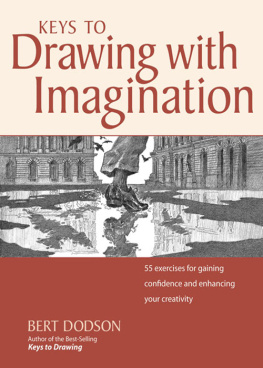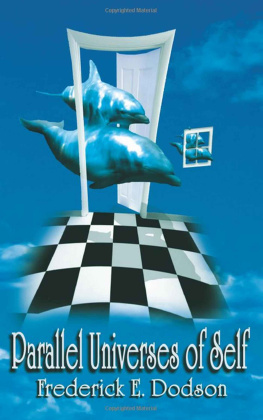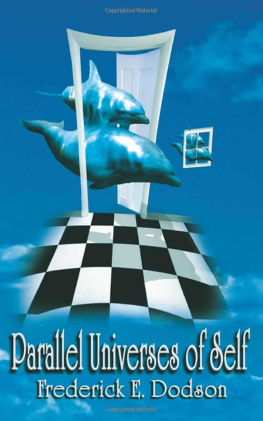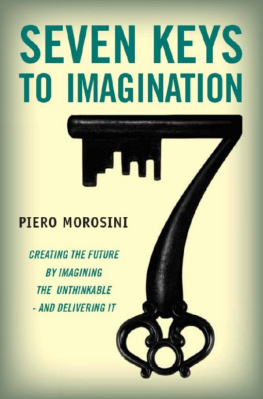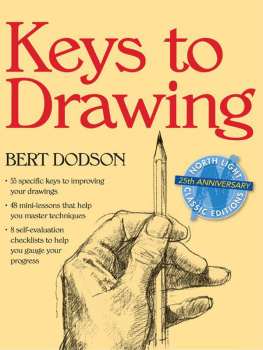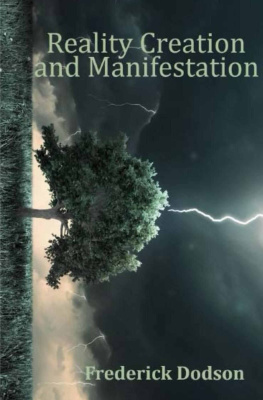
KEYS TO Drawing with Imagination
strategies and exercises for gaining confidence and enhancing your creativity
BERT DODSON

Keys to Drawing With Imagination: Strategies and Exercises for Gaining Confidence and Enhancing Your Creativity. Copyright 2007 by Bert Dodson. Manufactured in China. All rights reserved. No part of this book may be reproduced in any form or by any electronic or mechanical means including information storage and retrieval systems without permission in writing from the publisher, except by a reviewer who may quote brief passages in a review. Published by North Light Books, an imprint of F+W Publications, Inc., 4700 East Galbraith Road, Cincinnati, Ohio, 45236. 289-0963. (800) 289-0963. First Edition.

Other fine North Light Books are available from your local bookstore, art supply store or direct from the publisher.
11 10 09 08 5 4 3
DISTRIBUTED IN CANADA BY FRASER DIRECT 100 Armstrong Avenue Georgetown, ON, Canada L7G 5S4 Tel: (905) 877-4411
DISTRIBUTED IN THE U.K. AND EUROPE BY DAVID & CHARLES Brunel House, Newton Abbot, Devon, TQ12 4PU, England Tel: (+44) 1626 323200, Fax: (+44) 1626 323319 Email: postmaster@davidandcharles.co.uk
DISTRIBUTED IN AUSTRALIA BY CAPRICORN LINK P.O. Box 704, S. Windsor NSW, 2756 Australia Tel: (02) 4577-3555
Edited by
Amy Jeynes and
Erin Nevius
Designed by Guy Kelly
Production coordinated by Matt Wagner
Library of Congress Cataloging-in-Publication DataDodson, Bert.
Keys to drawing with imagination: strategies and exercises for gaining confidence and enhancing your creativity/Bert Dodson.
p. cm
ISBN-13: 978-1-58180-757-8 (alk. paper)
ISBN-13: 978-1-60061-592-4 (EPUB)
ISBN-10: 1-58180-757-0 (alk. paper)
1. Drawing Technique. 2. Creative ability. I. Title
NC730.D562 2006
741.2 dc22
2006046724
METRIC CONVERSION CHART
| To convert | to | multiply by |
|---|
| Inches | Centimeters | 2.54 |
| Centimeters | Inches | 0.4 |
| Feet | Centimeters | 30.5 |
| Centimeters | Feet | 0.03 |
| Yards | Meters | 0.9 |
| Meters | Yards | 1.1 |

The Birth of An Idea Colored pencil
ABOUT THE AUTHOR
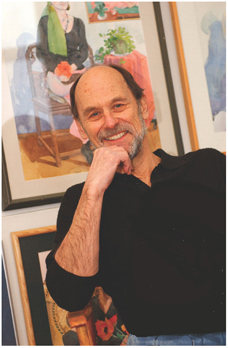
Photo by John Douglas, Flying Squirrel
Bert Dodson is a painter, teacher, author and illustrator. He is the author of the best-selling North Light book, Keys to Drawing.He has also co-authored The Way Life Works with Mahlon Hoagland and worked as an animation designer for the PBS television series Intimate Strangers.He has illustrated over 70 children's books. He has studied and taught creativity for over twenty years.
acknowledgments
I wish to thank the following artists who have generously contributed their work to this book:
Robert Baxter
Frank Bettendorf
Guy Billout
Ted Chaffee
Alan E. Cober (courtesy Ellen Cober)
John G. Crane
Steve Cosentino
Dave Creek
R. Crumb
George Dugan
Steven Guarnaccia
Don Helms
Stephen Huneck
Aya Itagaki
John Joline
Maya Lin
Zelma Loseke
Michael Mitchell
Victor Moscoso
Alex Pinkerson
Stephen Plume
Omar Ruiz
Paul Rump
J.R. Smith
Reinhart Sonnenberg
Trina Schart Hyman
Gidon Staff
Lynn Sweat
Joey Tate
Joan Waltermire
Ricker Winsor
I am particularly grateful to Amy Jeynes, managing editor at North Light Books, for seeing this book through to completion; Peter Mallary for additional and valuable editing; Judith Church and Scott Dodson for offering key suggestions; my agent, Jill Kneerim, for getting this project off the ground; and my key organizer, Suzi Claflin, for keeping it there. In addition, the following people have given important technical and moral support:
Phillip Bowman
Bill Germer
Ira Ginsberg
Mahlon Hoagland
David Kelly
Don Lambert
DeWitt Mallary
Brian McGuiness
Ben Moore
Phyllis Nemhauser
Emilie Perry
Ed Reinhardt
Mason Singer
John Stephens
David Webster
Finally, I'm indebted to the following writers and thinkers who, through their work, have contributed to my understanding of the subject of creativity:
Gregory Bateson
Deepak Chopra
Werner Erhard
Robert Fritz
Arthur Koestler
J. Krishnamurti
Douglas Hofstadter
Peter Loundon
Steven Pinker
Twyla Tharp
David Whyte
For Michael Mitchell, who showed me what was possible with drawing
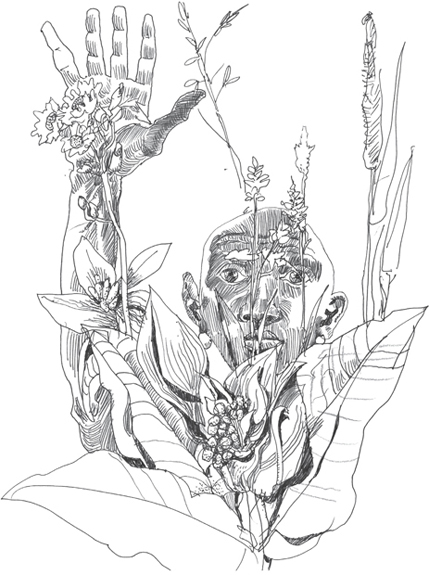
introduction
Asked to describe the creative process, the painter Jasper Johns replied, It's simple: You just take something and do something to it, and then do something else to it. Keep doing this, and pretty soon you've got something.
Johns' comment succinctly summarizes everything I have learned about creativity in 60+ years of drawing. Having said that, we will use the rest of this book to explore what it means to take something and do something to it. In the process, I hope to deepen your experience of imagining and creating.
Keys to Drawing With Imagination takes a broad look at what it means to draw from your imagination. This might mean drawing the fantasy images in your head. It could also mean distorting, abstracting or simply doodling. Imaginative drawing may include making strange combinations, making connections between seemingly unrelated things or simply drawing from memory. It certainly involves making creative choices about the things you choose to draw.
We tend to think of imagination and creativity as qualities that people have. But in reality these qualities show up only in action as something you do. Simply put, imagining is what you do in your head; creating is what you do on paper. Are there rules for creating? Probably not, if a rule is something that you must do. But let's distinguish between rules and principles. I believe that there are useful principles that can help you create. Jasper Johns has already given us a first principle: Creativity occurs in action.
You don't need to be exceptionally clever to draw creatively. Certainly theories about creativity don't help much. You don't even need to have particularly good ideas. Often, ideas don't occur to you until after you've started drawing. So you should not wait around for great ideas. Just begin with simple ideas. Bigger things will emerge out of them. We can make this our second principle: Creativity begins with simple ideas.
The one indispensable quality essential for creating is engagement with the work. When you are engaged lost in the work you shift out of the future and into the present. This is where creativity thrives. Out of this comes our third principle:

